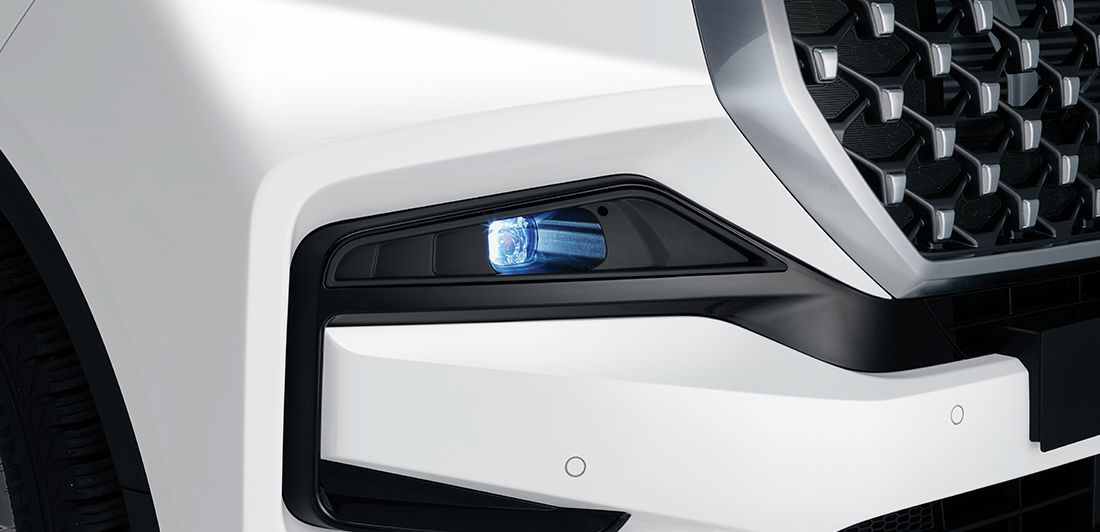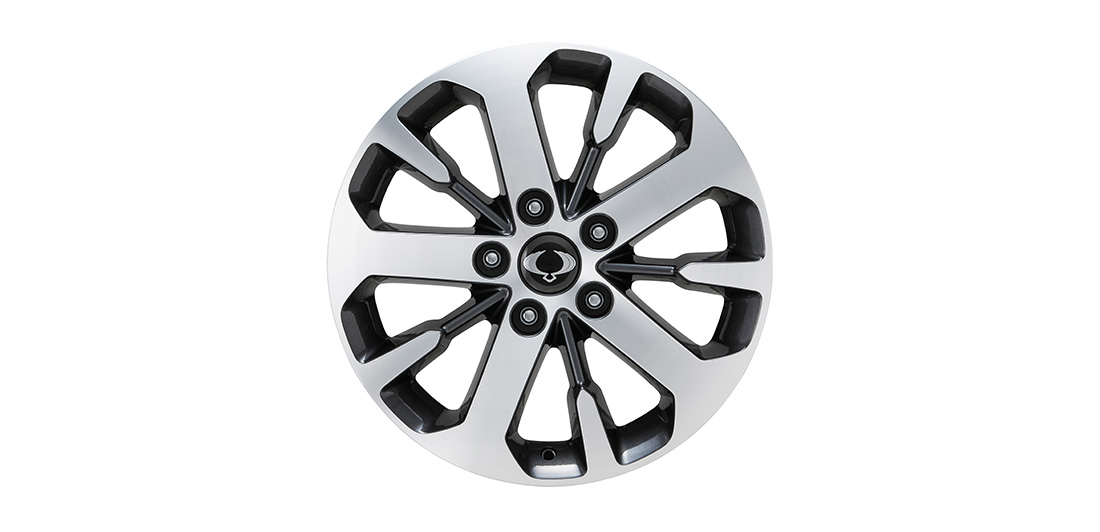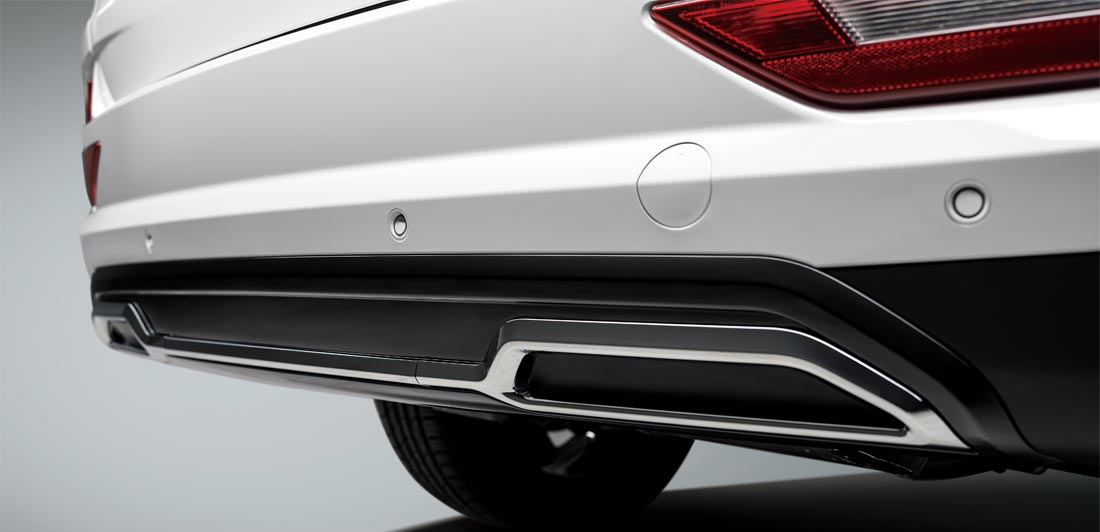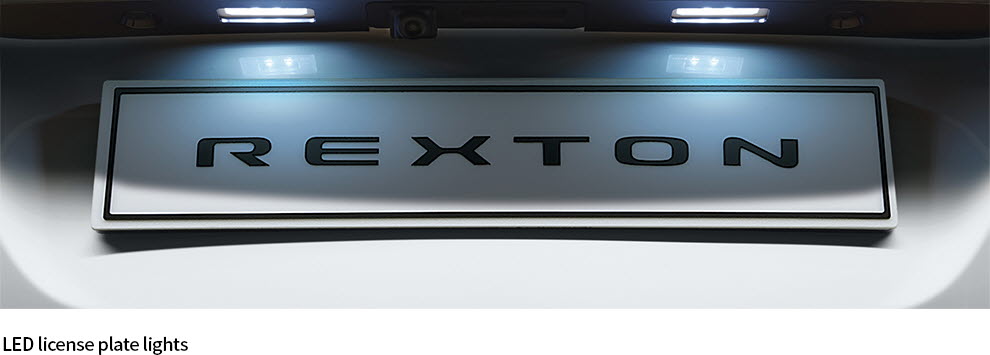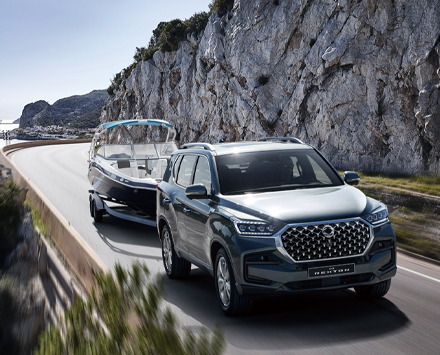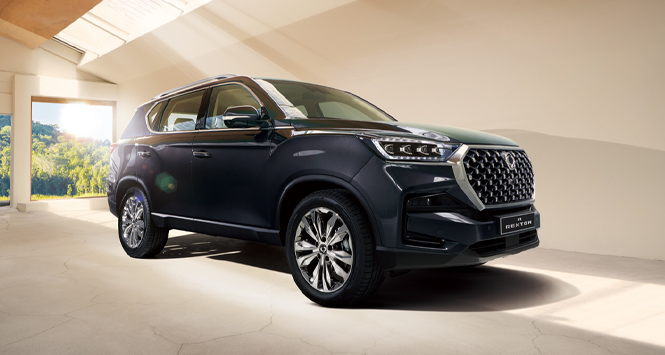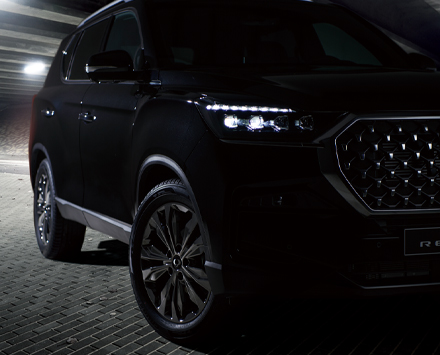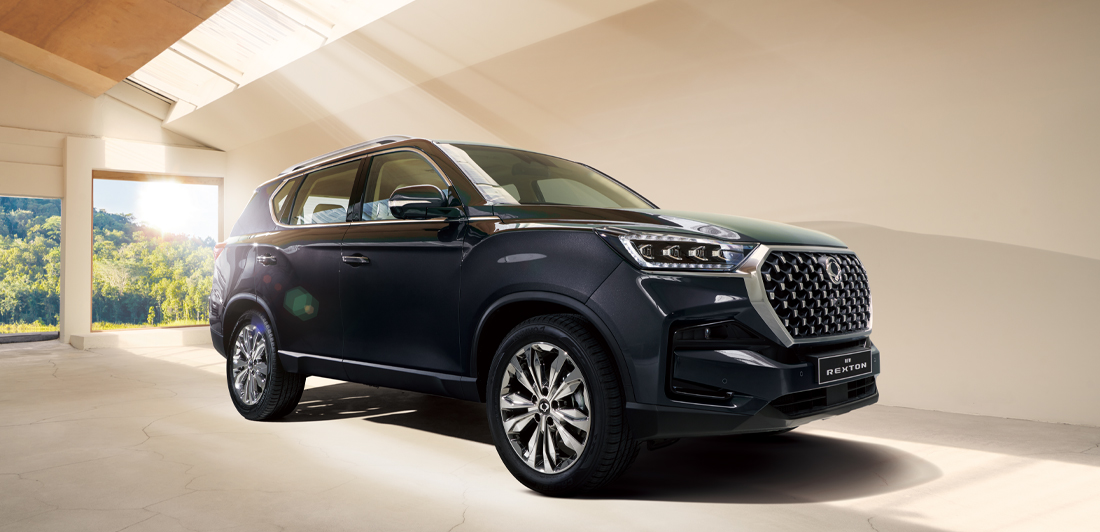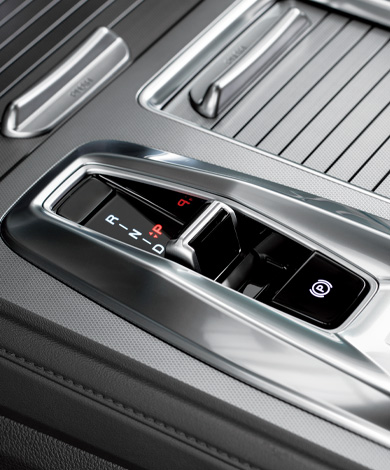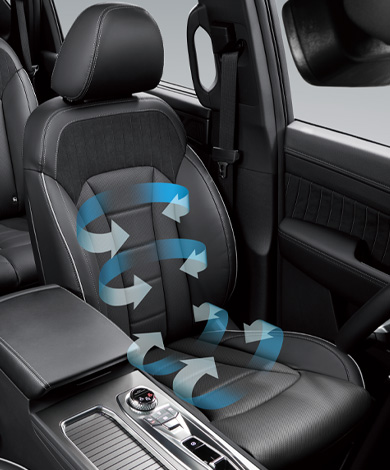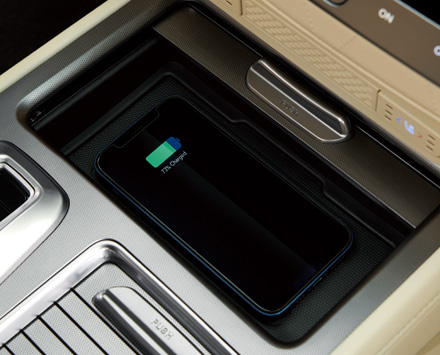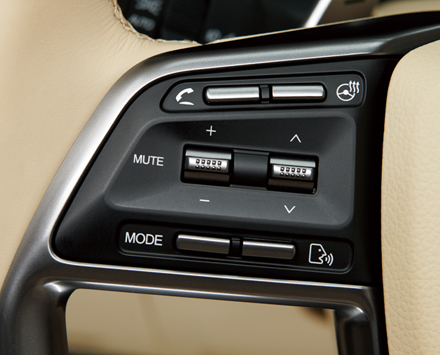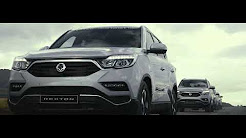Ssangyong Motor

|
2023 REXTON |
Understated style is in the detail, and befitting a premium quality luxury SUV, Rexton boasts some standout features that really make the difference. |
|---|

|
2020 REXTON |
As a luxurious yet rugged SUV, the Rexton features a bold new grille with a diagonal chain mail pattern. It is flanked by stylishly flush headlamp covers above, and an artfully angular body-coloured bumper element below. The effect is a stately beauty. |
|---|

|
2017 REXTON |
Inheriting the brand value of Rexton as an iconic authentic SUV, the 4th generation of Rexton was introduced in 2017. As the flagship SUV of SsangYong, the size of the 2017 Rexton has been enlarged compared to previous models, and has been greatly enhanced with a blend of off-road capability, on-road comfort, and refined interior. Along with its majestic look, Rexton offers a powerful driving performance based on the combination of 2.2 litre e-XDi220 diesel engine, a 7-speed automatic transmission from Mercedes-Benz and 4 wheel drive system. Particularly, Rexton is applied with Quad Frame using Advanced High Strength Steel (AHSS) to offer reliable safety to all occupants while minimizing weight of the vehicle. |
|---|

|
2015 REXTON W |
Rexton W went through a facelift in 2015, adopting new vertical front grille and new W badge on the left side of the body. 2015 Rexton W was also upgraded with a Euro 6 compliant 2.2 litre diesel engine, and a 7-speed Mercedes-Benz automatic transmission also became available. |
|---|

|
2012 REXTON W |
In 2012, Rexton was again brought up-to-date and transformed into a modern and refined SUV, adding the suffix ‘W’ to its name. The ‘W’ in the name stands for ‘work of art’ and ‘world class,’ underscoring the modern and sophisticated design concept. With a sleek and simple character line, a more harmonious appearance was achieved by blending contemporary change with the original and unmistakable identity. Along with the exterior, the interior also became more contemporary and intuitive, with the inclusion of aluminum-effect and chrome finishes. And to meet the trend towards smaller power units, a newly developed 2.0 litre e-XDi200 diesel engine was introduced to improve fuel efficiency. |
|---|

|
2008 SUPER REXTON |
Rexton II went through a facelift in 2008, adopting new front grille and changing its name to Super Rexton. To intensifying safety features, forward obstacle detecting sensor was mounted for the first time in its class. Super Rexton also offered a new powertrain option, adding a 2.0 litre XDi diesel engine to meet the demand towards smaller power units. |
|---|

|
2007 REXTON II EURO |
To comply with the Euro 4 emission standard, Rexton II was newly equipped with the Catalyzed Diesel Particulate Filter (CDPF). |
|---|

|
2006 REXTON II |
The 2nd generation Rexton added a more masculine and dignified look. Adopting the same headlamp design seen on the SsangYong’s executive saloon, the Chairman, a luxurious and confident personality was established, especially when matched with a black exterior which became the most popular colour. Powered by 2.7 litre XDi engine with a Variable Geometry Turbocharger (VGT), it delivered up to 180bhp, while pre-heating was reduced to 2 seconds. In addition, a new four-wheel drive system distributed torque equally to all four wheels for optimum acceleration and responsiveness, while advanced multi-link independent suspension was introduced to the rear for increased ride comfort. |
|---|

|
2003 NEW REXTON |
Rexton went through a facelift in 2003, introducing SsangYong’s new signature front grille and chrome finish, and underlining Rexton as the brand’s flagship SUV. A further transformation came with a new powertrain, the first time a SsangYong car was powered by the 3rd generation common-rail 2.7 litre diesel engine, replacing the previous 2.9 litre engine. Also, SsangYong’s special 4WD technology provided a more dynamic and improved driving performance. |
|---|

|
2001 REXTON |
As a 4x4 SUV specialist, SsangYong took the decision to go a step further and develop a more advanced SUV – luxurious, stylish and with premium safety features, specialist 4x4 technology and using knowledge accumulated from the alliance with Mercedes-Benz. This led to establishing Rexton as the brand’s new and authentic SUV, and a new product category that hadn’t previously existed. Designed by an Italian designer Giugiaro, the car had a simple yet refined style, highlighted by unique combed lines in the front bumper that gave a differentiated and prestigious look to Rexton. Convenience and safety features including dual airbags, ABS, and a high-lifting tailgate appealed to those who demanded powerful diesel performance and a high level of comfort and practicality. |
|---|

- INTERIOR COLOR ESPRESSO BROWN CLASSICAL BEIGE
- INTERIOR COLOR ASH BLACK KHAKI
- INTERIOR COLOR BLACK/BEIGE BLACK
- INTERIOR COLOR BLACK SUED MAROON
SOLIDLY BUILT FOR OPTIMUM SAFETY
ADVANCED DRIVER ASSISTANCE SYSTEMS (ADAS)
– KEEPING YOU SAFE


TECHNICAL DATA
| ENGINE | Diesel 2.2 (5-seater) | Diesel 2.2 (7-seater) | |||||||||
|---|---|---|---|---|---|---|---|---|---|---|---|
| DRIVEN WHEELS | 2WD | Part time 4WD | 2WD | Part time 4WD | |||||||
| TRANSMISSION | 8AT | ||||||||||
| EMISSION | Euro 6e | ||||||||||
| EXTERIOR DIMENSIONS |
Overall length | mm | 4,850 | ||||||||
| Overall width | 1,960 | ||||||||||
| Overall height | 1,825 (with roof rack) | ||||||||||
| Wheelbase | 2,865 | ||||||||||
| Tread | Front | 1,640 | |||||||||
| Rear | 1,640 | ||||||||||
| Overhang | Front | 895 | |||||||||
| Rear | 1,090 | ||||||||||
| Minimum ground clearance | 224 (with independent rear suspension) / 203 (with 5-link rear suspension) | ||||||||||
| Minimum turning radius | m | 5.5 | |||||||||
| WEIGHT | Gross vehicle weight | kg | 2,670 | 2,800 | 2,820 | 2,950 | |||||
| Kerb weight | 1,960 | 2,070 | 1,980 | 2,105 | |||||||
| Gross trailer weight |
Braked | 2,700 | 3,500 | 2,700 | 3,500 | ||||||
| Unbraked | 750 | ||||||||||
| ENGINE | Fuel | - | Diesel | ||||||||
| Fuel tank | ℓ | 70 | |||||||||
| Capacity | cc | 2,157 | |||||||||
| Bore X stroke | mm | 86.2 X 92.4 | |||||||||
| Compression ratio | - | 15.5:1 | |||||||||
| Number of cylinders | - | 4 in-line | |||||||||
| PERFORMANCE | Max. power | kW/rpm | 148.6 / 3,800 | ||||||||
| ps/rpm | 202 / 3,800 | ||||||||||
| Max. torque | Nm/rpm | 441 / 1,600~2,600 | |||||||||
| kgf.m/rpm | 45 / 1,600~2,600 | ||||||||||
| Max. speed | km/h | 184 | |||||||||
| ISG (IDLE STOP & GO) | with ISG | Without ISG | with ISG | Without ISG | with ISG | Without ISG | with ISG | Without ISG | |||
| FUEL CONSUMPTION |
CO2 (combined) | g/km | 201 | 209 | 216 | 220 | 205 | 211 | 219 | 229 | |
| Combined | ℓ/100km | 7.669 | 7.975 | 8.241 | 8.469 | 7.822 | 8.055 | 8.355 | 8.729 | ||
| Phase 1(Low Phase) | 9.741 | 11.121 | 10.555 | 11.945 | 9.959 | 11.264 | 10.560 | 12.224 | |||
| Phase 2(Mid Phase) | 7.641 | 7.917 | 8.412 | 8.527 | 7.770 | 8.000 | 8.403 | 8.820 | |||
| Phase 3(High Phase) | 6.660 | 6.756 | 7.128 | 7.207 | 6.773 | 6.818 | 7.271 | 7.494 | |||
| Phase 4(Extra High Phase) | 7.784 | 7.888 | 8.240 | 8.228 | 7.961 | 7.957 | 8.440 | 8.438 | |||
- • The above technical data is based on Europe specification.
- • The above technical data can vary slightly by regional certification requirements or sales specifications.
- • The fuel economy can vary according to road conditions or driver's habits.
- • The declared fuel consumption and CO2 emissions were determined according to the newly introduced World wide Harmonized Light Vehicles Test Procedure (WLTP) and additionally measured according to the Real Drive Emission (RDE)method during road tests.
- • The engine complies with the EURO 6d STEP 2 emission standard.
- • The details do not relate to a single, individual vehicle and are not part of the offer, but serve only for comparison purposes among the different vehicle types.

























